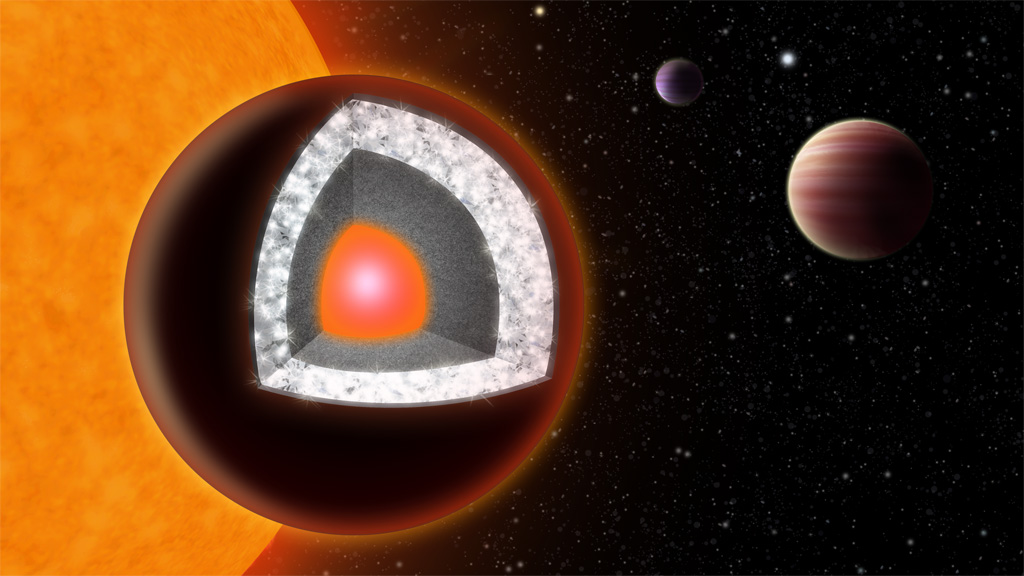A new planet that’s a real diamond
It seems the universe has just got a little bit richer following the discovery of a new planet which scientists say is made largely out of diamonds.

The rocky planet called ’55 Cancri e’ orbits a sun-like star in the constellation of Cancer and is twice the size of Earth.
Time is said to move at hyper-speed on this gem-like planet so one year lasts just 18 hours compared to Earth’s 365 days.
Despite being 40 light years away from earth, in dark skies 55 Cancri e’s host star is clearly visible to the naked eye.
Researchers believe the planet’s surface is covered primarily in carbon in the form of graphite and diamond rather than water and granite like our planet.
Marek Kukula, Public Astronomer at the Royal Observatory Greenwich told Channel 4 News, “It’s a lovely image – diamonds in the sky – but there’s not likely to be a space mission to the mine the diamonds any time soon because it would probably take 10,000 years to get there.
Buried deep down
“The planet is intensely hot, 2,000 degrees Centigrade and the diamonds are likely to be buried deep down. We’d end up spending all the diamonds on Earth in order to get there so it’s not a way to get rich quick.
“In general mining in space is being talked about more and more and is moving away from being something science-fiction to something that is more serious. Asteroids are thought to have precious metals and they are relatively close to us in our solar system.
“Although they are moving, if we could chase and catch one it is not far-fetched to think in the next couple of decades this may be tested.”
The study was led by researchers at Yale University who estimate that at least one third of the 55 Cancri e’s mass – the equivalent of about three earth masses – could be diamond.
It’s the first time astronomers have identified a diamond planet around a sun-like star and specified its chemical make-up. David Spergel, an astronomer at Princeton University, said it was relatively simple to work out the basic structure and history of a star once you know its mass and age.
He said: “Planets are much more complex. This ‘diamond-rich super-Earth’ is likely just one example of the rich sets of discoveries that await us as we begin to explore planets around nearby stars.”